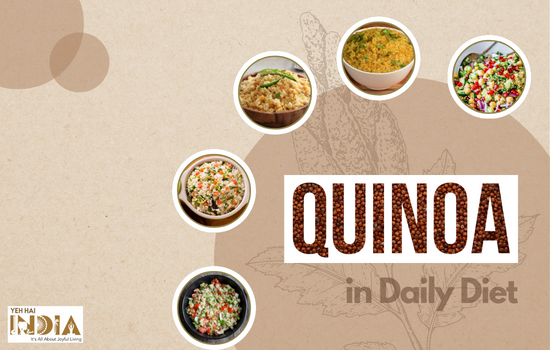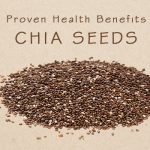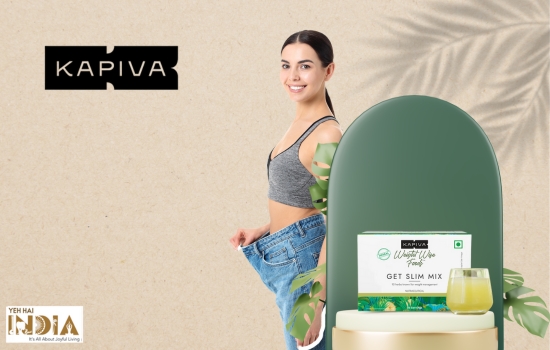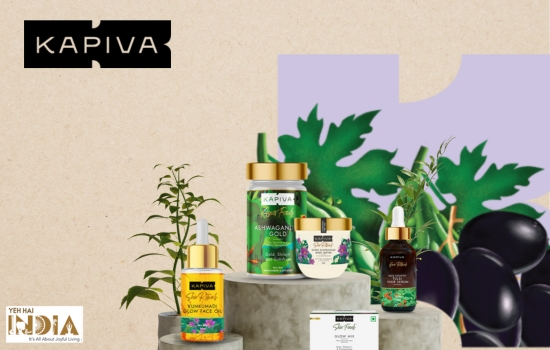The revelation of the 5000-year-old cereal that is surprisingly high in plant protein and has an excellent amino acid composition, makes quinoa a viable candidate for daily consumption. Until recently, quinoa has always been thought of as a cereal that is just a fancy substitute for rice, but it is time to recognise its benefits and consider it as a cereal option in our kitchen.
What is Quinoa?
Quinoa is a high-protein grain native to the Andean regions of South America. It has a mild, nutty flavour and a light, fluffy texture when cooked. It is an excellent source of macronutrients, particularly protein, due to its high concentration of essential amino acids. This super grain is not only well-known for its nutritional profile but it is also recommended by the World Gastroenterology Organisation as a grain for gluten-intolerant patients.
Quinoa is a cereal with a high carbohydrate content, a high protein content, an excellent amino acid composition, and the ability to grow in harsh conditions. This makes it a cereal with a rich nutritional profile and a sustainable choice.
It has bioactive compounds in addition to the basic nutritional profile, which adds a wow factor to this grain because the presence of these bioactive compounds suggests potential beneficial effects on human health.
This quality-packed cereal has anti-oxidative, anti-hypertensive and anti-diabetic properties. It is a great addition to a balanced diet. Further, the grain’s low glycemic index (meaning it digests slowly, which helps keep blood sugar levels in check), gluten-free status, and ease of digestion makes it an ideal grain to include in your daily diet.
Nutrition Profile:
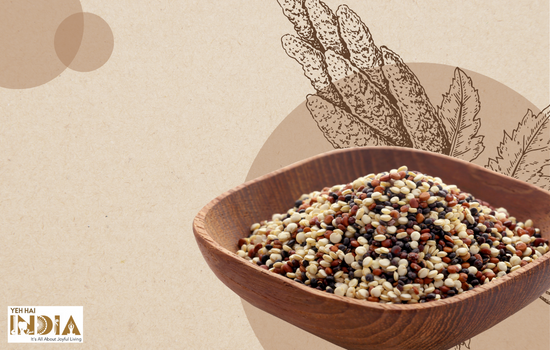
Quinoa is a to be very nutritious food grain. It is high in protein, dietary fibre, and essential vitamins and minerals, including: (per 100g)
- Calories: 120 kcal
- Fat: 1.92 g
- Carbohydrates: 21.3 g
- Protein: 4.4 g
- Fibre: 2.8 g
- Sugars: 0.87 g
- Calcium: 17 mg
- Iron: 1.49 mg
- Magnesium: 64 mg
- Phosphorus: 154 mg
- Potassium: 172 mg
- Zinc: 1.09 mg
- Vitamin E: 0.63 mg
- Riboflavin: 0.11 mg
- Thiamin: 0.107 mg
- Niacin: 0.412 mg
- Folate: 42 mcg
- Selenium: 2.8 mcg
- Vitamin B6: 0.123 mg
- Folate: 42 mcg
- Choline: 23 mg
Antioxidants:
Quinoa also contains a variety of antioxidants, including:
- Quercetin
- Kaempferol
- Isovitexin
- Caffeic acid
- Vanillic acid
- Chlorogenic acid
Why should you include quinoa in your diet?
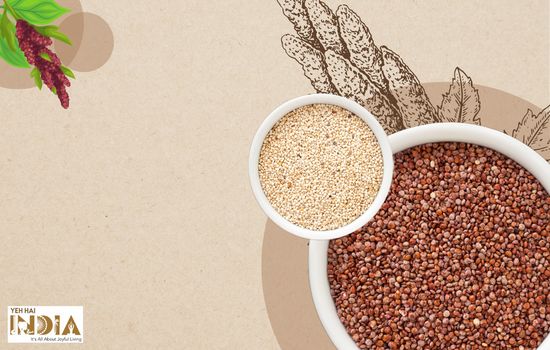
Quinoa is a nutritious whole grain that has gained popularity over the past few years. It is high in essential vitamins and minerals, and it is also a source of complete proteins, making it suitable for vegetarian and vegan diets. Here are some reasons why this food grain deserves a spot on your kitchen counters.
Recommended Story – Famous Top 10 Nutritionists (Best Dietician) to Follow in India
1. Protein-rich
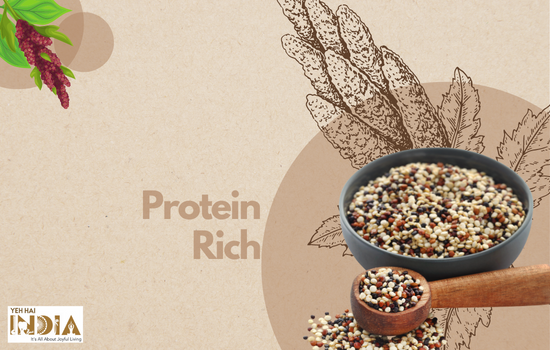
Quinoa is a complete protein that is easily digestible and thus has a higher biological value* than rice, wheat, and corn. The bioactive protein components (peptides) present have anti-oxidative, antimicrobial, immunomodulatory, and anti-hypertensive properties. It has a more balanced amino acid composition than wheat, barley, and soybean.
*Biological Value means the proportion of protein retained in the body for growth and/or maintenance.
2. Fibres and Fatty acid

Quinoa contains more fibre than rice or corn. The fibre components have antioxidant and immunomodulatory properties. It provides up to 5g of proteins per cooked cup. Fibre helps to keep the digestive system healthy and can also help to reduce levels of cholesterol. When it comes to fat content, it has the highest unsaturated-to-saturated fat ratio and has health-promoting effects.
Quinoa is low in fat, providing just 2.5g per cooked cup, while also being low in sodium, which can help lower blood pressure. Also, it is a source of plant-based omega-3 fatty acids, which are necessary for proper brain and heart health.
3. Reservoir of vitamins & antioxidants
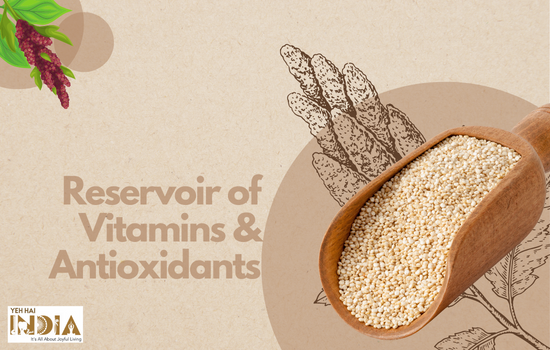
Quinoa has a higher mineral content than most grains. It contains significantly more iron, calcium, magnesium, iron, copper, and zinc. In terms of vitamins, it has the highest folic acid content as well as a high concentration of thiamine, Vitamin C, and Vitamin B6. It is also a good source of antioxidants, which help to reduce the risk of diseases such as cancer and heart disease.
4. Gluten-free grain
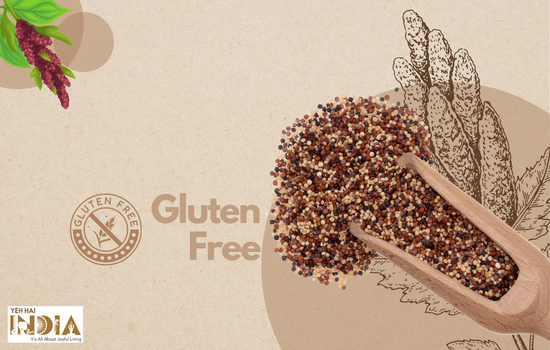
In addition to its nutritional benefits, it is gluten-free, making it suitable for those who suffer from Celiac disease or gluten intolerance.
5. Quinoa health benefits
- Quinoa consumption lowers triglyceride and bad cholesterol levels and is beneficial to heart health.
- It has immune regulatory properties such as immunity enhancement and anti-inflammatory properties, and it is also beneficial for postmenopausal women.
- It promotes weight loss and its phytochemicals protect against diabetes, reproductive problems, allergies, and cancer.
- In children, quinoa in baby food has the potential to prevent malnutrition in children.
- Other health benefits of quinoa include improved digestion, heart health and an increase in the essential vitamins and minerals consumed every day.
- Including this grain in a well-balanced meal can be a nutritionally sound choice. Incorporation and proper use of quinoa can be beneficial for a variety of health issues. Other than in a square meal, it can also be consumed in different forms and tastes such as dosas, pancakes, smoothies, etc.
- It is also easy to digest and can help to reduce pancreatic discomfort as well as helping to lower cholesterol.
Let’s add some Indianness to this cereal by using it in an upma or dosa for a healthy breakfast or as a substitute for rice in one of our meals to soak up its goodness.
In terms of digestibility and adaptation, incorporating an out-of-India product is a step back, but here is a way to calm that nerve down: quinoa is well-adapted in India in terms of production. Besides, considering its benefits, it can be considered an option for ‘silent hunger’* as well as a great protein source.
Therefore, why not allow quinoa to enter our kitchens and make it a part of the cereals we consume?
* Silent hunger means a deficiency of nutrients that affects billions of people across the world.
Some lip-smacking Quinoa recipes you can try:
Quinoa can be included in your everyday diet in numerous forms. It can be made into salads, breakfast recipes, as a substitute for rice and also in some delicious dessert recipes.
We have curated some popular quinoa recipes in this article that you can try for yourself at home.
1. Chickpea Quinoa Salad
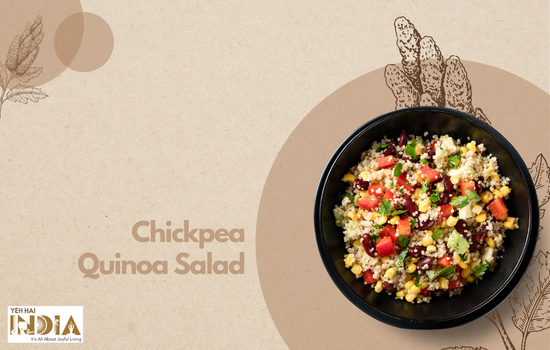
The salad is made with cooked quinoa, boiled chickpeas, cucumbers, red onions, garlic, tomatoes, red bell peppers, and fresh herbs like coriander and mint according to your preference.
For seasoning, you can use salt, pepper and any other dry herbs of your favour. Mix all the ingredients with a little olive oil and serve at room temperature.
2. Quinoa Khichdi

Khichdi made with rice and quinoa tastes similar and delicious, so you won’t be able to make out the difference. Just swap your regular white rice with boiled quinoa for this dal khichdi.
Additionally, you can also include vegetables like tomatoes, carrots, peas, broccoli, potato, zucchini, and bell peppers to make them more tasty and nutritious.
3. Quinoa Upma

The traditional upma is wholesome and nutritious and is usually made with broken wheat or rava. It is also made with white rava. Quinoa can replace broken wheat or the white rava in the traditional upma recipe. It can be easily prepared in 15-20 minutes and serves as a wholesome, nutritious breakfast dish.
4. Quinoa Pulao/ Pilaf
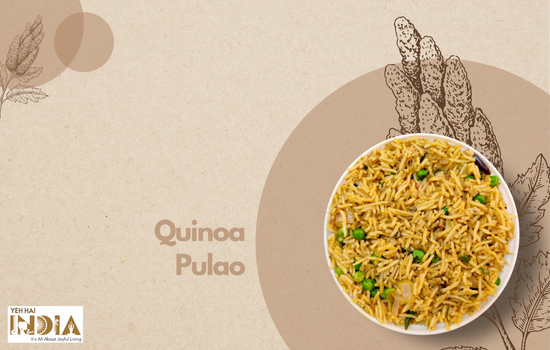
The pulao made from quinoa is a gluten-free, vegan lunch recipe. You can add vegetables like carrots, peas, onions, tomatoes, green beans, sweet corn, etc. Now, saute the whole spices in a little oil or ghee, then add onions, green chillies and ginger-garlic paste. Add your preferred vegetables, quinoa, some turmeric, garam masala, salt and water. Finally, pressure cook the mixture and garnish with some fresh coriander and lemon juice once it is ready.
5. Quinoa Tabbouleh Salad
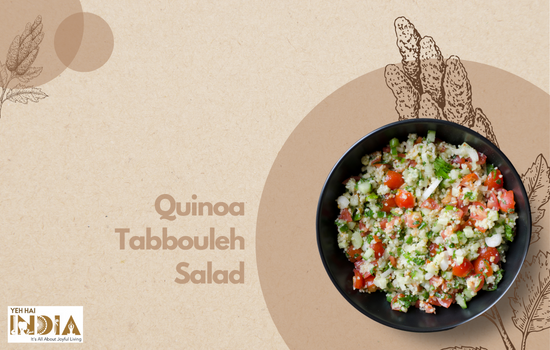
The Tabbouleh salad is a traditional, middle-eastern salad made of bulgar wheat, parsley, mint, onion, and tomato in a lemon juice and olive oil dressing.
We can switch the bulgar wheat with quinoa and make the salad more nutritious and gluten-free. Also, this salad can be refrigerated and had the next day which makes it much tastier once the dressing marinates well.
Summary:
Quinoa is a gluten-free grain that is gaining popularity due to its many health benefits. It is a complete protein, meaning it contains all 9 essential amino acids. It is also high in fibre, magnesium, B vitamins, iron, potassium, calcium, phosphorus, and vitamin E.
Also, quinoa is a great source of antioxidants, which help protect the body from damage caused by free radicals. It is naturally gluten-free and is suitable for a variety of diets.
Quinoa is also low in fat and cholesterol-free, making it an ideal food for those looking to maintain a healthy weight. Moreover, it has a light, nutty flavour and can be used in a variety of dishes, from breakfast to dinner.
Thus, quinoa is an excellent addition to any diet and can provide a number of health benefits, such as improved digestion, reduced risk of heart disease, and weight loss.
If you’re looking for a vegan source of protein you can freely consume then quinoa is the best option.
Also Read – Ayurvedic Diet: 10 Rules To Stick To For Disease-Free Life
Frequently Asked Questions:
What are the benefits of eating quinoa?
- High fibre grain
- Helps lose weight due to low fat and high protein content
- Improves digestion and heart health
- Improves immunity and is good for women in the postmenopausal stage
- Lowers cholesterol and balances blood sugar levels
Is quinoa a lot healthier than rice?
A single serving of quinoa provides double the protein and five grams more fibre than white rice. Quinoa is healthier than rice as it contains higher protein and fibre content and also satisfies you quickly, leading to smaller servings during meals.
How do I eat quinoa?
Quinoa can be consumed in different delicious forms. It can replace the main grain in your meal or it can be included in creative recipes for smoothies, pancakes, etc. For us, Indians, quinoa can be used in upma, khichdi and in any lunch recipe using rice. Others who like a variety can make salads, nutrition bowls and even burgers from this grain.
What is the best way to eat quinoa?
Use this grain as a substitute for rice to get more proteins. Porridge and salads are probably the healthiest recipes you can make out of this super grain. However, you can also make tasty, Indian dishes out of this grain if you are looking for a variety.
Do we need to soak quinoa?
No, it is not necessary. Soaking quinoa for even a short period can lead to your dish becoming soggy and mushy. Instead, you can just wash the grain just before cooking it. This is enough to remove the impurities and bitterness from the grain but remains soft and fluffy enough.


